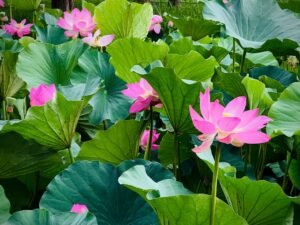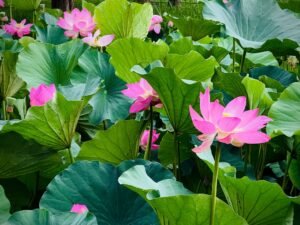

Norwegian for Hikers: Language for Exploring Norway’s Natural Landscapes
Norway is renowned for its breathtaking natural landscapes, from towering mountains to deep fjords and pristine forests. It’s no wonder that hikers from around the world flock to this Scandinavian country to explore its trails and immerse themselves in its beauty. However, while the landscapes may be awe-inspiring, navigating them can be a challenge without a basic understanding of the Norwegian language. Learning Norwegian can greatly enhance your hiking experience in Norway, allowing you to communicate with locals, navigate the trails, and gain a deeper appreciation for the culture and customs of the country.
Table of Contents
ToggleBasic Norwegian Vocabulary for Hikers
Before embarking on a hiking adventure in Norway, it’s essential to familiarize yourself with some basic Norwegian vocabulary. This will not only help you navigate the trails but also enable you to communicate with locals and make the most of your experience. Some essential words and phrases for hikers include:
– “Takk” (thank you)
– “Unnskyld” (excuse me)
– “Hvor er…?” (where is…?)
– “Mat” (food)
– “Vann” (water)
– “Toalett” (toilet)
– “Ja” (yes)
– “Nei” (no)
These words and phrases will come in handy when asking for directions, ordering food, or engaging in basic conversation with locals. For example, if you’re looking for a trailhead, you can ask “Hvor er starten på stien?” (Where is the beginning of the trail?) or if you’re ordering food at a restaurant, you can say “Jeg vil gjerne ha en burger, takk” (I would like a burger, please).
Norwegian Pronunciation Guide
While learning vocabulary is important, it’s equally crucial to learn how to pronounce the words correctly. Norwegian pronunciation can be challenging for non-native speakers, but with some practice, it can be mastered. Here are some tips for speaking Norwegian correctly:
– Pay attention to vowel sounds: Norwegian has a variety of vowel sounds that may be unfamiliar to English speakers. Practice pronouncing words with different vowel sounds to improve your pronunciation.
– Focus on consonant clusters: Norwegian often has consonant clusters that can be difficult to pronounce. Practice saying words with these clusters to improve your fluency.
– Listen to native speakers: One of the best ways to improve your pronunciation is by listening to native speakers. Watch Norwegian movies or listen to Norwegian music to get a feel for the language.
Avoiding common pronunciation mistakes is also important. For example, many non-native speakers struggle with the “r” sound in Norwegian, which is pronounced differently than in English. It’s important to practice this sound and listen to native speakers to get it right.
Understanding Norwegian Culture
Language and culture are deeply intertwined, and this is especially true in Norway. Understanding Norwegian culture can greatly enhance your hiking experience, as it allows you to connect with locals and respect their customs and traditions. Some cultural norms and customs to be aware of while hiking in Norway include:
– Respect for nature: Norwegians have a deep respect for nature and take great pride in their country’s natural landscapes. It’s important to follow Leave No Trace principles and leave the trails as you found them.
– Personal space: Norwegians value their personal space and tend to keep a distance when interacting with others. It’s important to respect this and not invade someone’s personal space.
– Punctuality: Norwegians are known for their punctuality, so it’s important to be on time for any scheduled activities or meetings.
– Equality: Norway is known for its commitment to gender equality, and this is reflected in its culture. It’s important to treat everyone with respect and equality while hiking in Norway.
By understanding and respecting these cultural norms, you can have a more meaningful and enjoyable hiking experience in Norway.
Communicating with Locals
Being able to communicate with locals is not only helpful for navigating the trails but also for making connections and gaining insights into the local culture. Here are some tips for interacting with Norwegians on the trail:
– Learn basic greetings: Greeting locals with a simple “Hei” (hello) or “God dag” (good day) can go a long way in establishing a friendly connection.
– Ask for recommendations: Norwegians are often happy to share their favorite hiking spots or give advice on the best trails. Don’t be afraid to ask for recommendations.
– Practice active listening: When engaging in conversation with locals, practice active listening by nodding, maintaining eye contact, and asking follow-up questions. This shows that you are interested and engaged in the conversation.
It’s also important to be aware of cultural differences in communication styles. Norwegians tend to be direct and value honesty, so it’s important to be straightforward and avoid beating around the bush when communicating with locals.
Reading Norwegian Maps
Norwegian topographic maps are an essential tool for hikers, as they provide detailed information about the terrain, trails, and landmarks. However, reading these maps can be challenging if you’re not familiar with the symbols and features used. Here are some tips for decoding Norwegian topographic maps:
– Familiarize yourself with key symbols: Norwegian maps use specific symbols to represent different features such as trails, rivers, and mountains. Study these symbols before your hike so that you can easily identify them on the map.
– Understand contour lines: Contour lines on a map represent changes in elevation. By understanding how to read contour lines, you can get a sense of the terrain and plan your route accordingly.
– Use a compass: A compass is an essential tool for navigating with a map. Learn how to use a compass and practice orienting yourself using the map and compass together.
Planning a hiking route using a map can be a rewarding experience, as it allows you to explore the trails at your own pace and discover hidden gems along the way.
Norwegian Weather Vocabulary
Norway’s weather can be unpredictable, and it’s important to be prepared for different weather conditions while hiking. Learning some essential weather vocabulary can help you understand weather forecasts and make informed decisions about your hike. Here are some words for describing different types of weather:
– “Sol” (sun)
– “Regn” (rain)
– “Snø” (snow)
– “Vind” (wind)
– “Skyer” (clouds)
– “Tåke” (fog)
By understanding these words, you can better prepare for different weather conditions and adjust your plans accordingly. It’s also important to check the weather forecast before heading out on a hike and to be prepared with appropriate clothing and gear.
Safety Phrases in Norwegian
While hiking in Norway, it’s important to be prepared for emergencies and know how to ask for help or report an emergency in Norwegian. Here are some essential safety phrases for hikers:
– “Hjelp!” (Help!)
– “Jeg har skadet meg” (I am injured)
– “Det er en nødsituasjon” (It is an emergency)
– “Ring ambulanse/politi” (Call an ambulance/police)
Knowing these phrases can be crucial in case of an emergency, as it allows you to communicate your situation and get the help you need. It’s also important to have a basic understanding of first aid and carry a first aid kit with you while hiking.
Norwegian Wildlife Vocabulary
Norway is home to a diverse range of flora and fauna, and encountering wildlife while hiking is not uncommon. Learning some words for identifying and describing Norway’s wildlife can enhance your hiking experience and allow you to appreciate the natural beauty of the country. Here are some words for describing different types of wildlife:
– “Elg” (moose)
– “Rein” (reindeer)
– “Rev” (fox)
– “Ørn” (eagle)
– “Hare” (hare)
– “Bjørn” (bear)
It’s important to observe wildlife from a safe distance and not disturb their natural habitats. Respect for wildlife and their habitats is crucial for preserving Norway’s natural landscapes for future generations.
Conclusion
Learning Norwegian is a valuable skill for hikers exploring Norway’s natural landscapes. It allows you to communicate with locals, navigate the trails, and gain a deeper understanding of the country’s culture and customs. By familiarizing yourself with basic vocabulary, practicing pronunciation, understanding cultural norms, and learning safety phrases, you can have a more enriching and enjoyable hiking experience in Norway. So lace up your hiking boots, grab your map, and start practicing your Norwegian language skills as you embark on an adventure through Norway’s stunning wilderness.
FAQs
Why is it important to learn Norwegian for hiking in Norway?
Learning Norwegian can help hikers communicate with locals, understand signs and directions, and appreciate the culture and history of the places they visit.
What are some basic Norwegian phrases that hikers should know?
Some basic Norwegian phrases that hikers should know include “hei” (hello), “takk” (thank you), “ja” (yes), “nei” (no), “beklager” (sorry), “hvor er…?” (where is…?), and “kan du hjelpe meg?” (can you help me?).
What are some common hiking terms in Norwegian?
Some common hiking terms in Norwegian include “fjell” (mountain), “sti” (trail), “topp” (peak), “skog” (forest), “foss” (waterfall), and “hytte” (cabin).
How can hikers practice their Norwegian language skills?
Hikers can practice their Norwegian language skills by using language learning apps, taking language classes, practicing with locals, and reading Norwegian books or websites.
What are some cultural tips for hikers in Norway?
Some cultural tips for hikers in Norway include respecting nature and wildlife, following the “allemannsrett” (right to roam) laws, dressing appropriately for the weather, and being punctual and respectful of others’ time.
If you want to learn Norwegian, you can register for classes here. If you want to check your Norwegian level for free, you can do that here. We look forward to hearing from you and helping you become fluent in Norwegian!
Refer a friend and get $150. Join the program here
If you want to learn Norwegian, you can register for classes here. We look forward to hearing from you and helping you become fluent in Norwegian.





